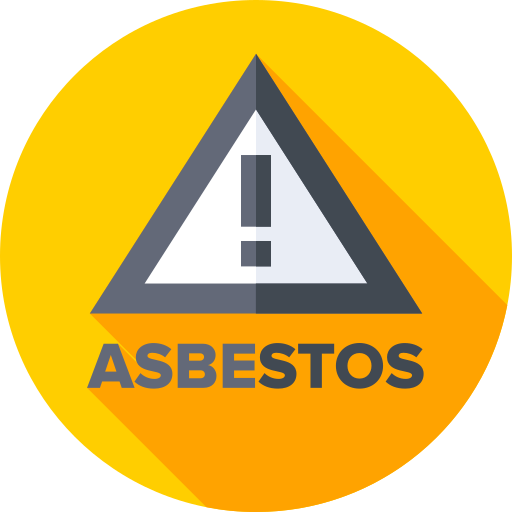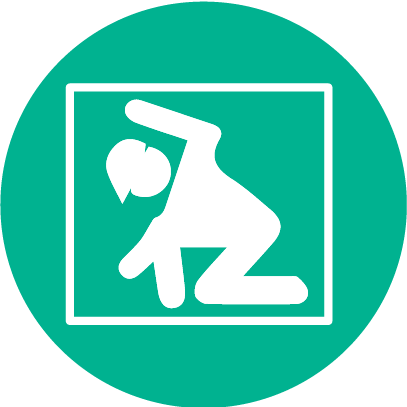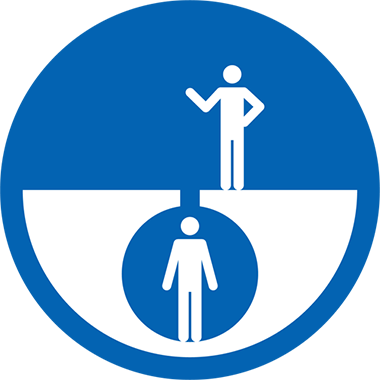SSSTS Mock Test

You have 30 minutes to answer 25 SSSTS Mock Test questions. You need to answer at least 20 out of 25 questions correctly to pass. Answers may be reviewed after each question or at the end of the test. Good luck!
Contents
- 1 SSSTS Mock Test
- 2 SSSTS Tests
- 3 SSSTS Tests by Category
- 4 Site Supervisory
- 5 What training and qualifications do I need to become a site supervisor?
- 6 Which CSCS card do I need to work as a site supervisor?
- 7 How do I get a gold CSCS card?
- 8 What does the SSSTS course involve?
- 9 How much does the SSSTS course for supervisors cost?
- 10 Why use the SSSTS mock test to revise?
- 11 SSSTS question types and pass mark weighting
- 12 What’s the purpose of the SSSTS exam?
- 13 What’s in the SSSTS exam?
- 14 What is the pass mark for the SSSTS exam?
- 15 Is there only one exam?
- 16 How will employers know I’ve passed?
- 17 How to use the mock SSSTS test
If you’re planning to complete the SSSTS course (Site Supervisor Safety Training Scheme) the last thing you want to do is to attend training and then fail the exam. As a standard requirement for most supervisory roles in the construction industry, if you want to work as a supervisor, the SSSTS is something you need. Due to the sector’s appalling past record for health and safety, evidence of health and safety competency is essential for any construction worker looking to move up through the industry. Making good use of the free online mock SSSTS test is a great way to revise for your SSSTS exam and ensure you pass first time. Read on to learn all you need to know about the role of a Site Supervisor, the SSSTS exam and how to use mock tests to guarantee you pass.
Site Supervisory
Site supervisors play a dynamic role on building sites, overseeing tasks, managing projects and liaising with staff. It’s a popular and varied role which combines leadership with the hands-on work we all enjoy.
Offering excellent career progression, many workers mull over the idea of becoming a site supervisor. If you’re already planning to apply for a position as a site supervisor, are worried you don’t have the necessary qualifications to apply for roles or want to find out how to become one, read on for a complete guide to all you need to know about working as a site supervisor in the UK.
What training and qualifications do I need to become a site supervisor?
You’ll need a range of formal qualifications and informal training to become a site supervisor.
Formal qualifications
To work in a supervisory role on-site, employers will expect you to have some level of construction training, completed after secondary education. For example, NVQs, apprenticeships, health and safety training, first aid training etc.
In particular, the gold CSCS card and the CITB’s SSSTS training course (the Site Supervisor Safety Training Scheme) are good places to start if you want to build your CV in preparation for applying for a position as a site supervisor.
Both the gold CSCS card and the CITB SSSTS training course are pretty much standard expectations from employers when recruiting for site supervisors in the UK.
There are instances where you may be able to get a role with only one of the two but generally specifications for employment request an SSSTS Certificate which is earned on completion of the SSSTS course and a gold CSCS card which can be obtained if you have the following qualifications.
Requirements for a gold CSCS card:
- an NVQ/ SVQ Level 3 for Occupational Work Supervision or a construction-related subject at a supervisory or technical level
or
- an NVQ/ SVQ Level 4 for a construction-related subject at a supervisory or technical level.
What is the CSCS?
The Construction Skills Certification Scheme (CSCS) operates under the CITB as a measure to raise standards of health and safety practice across the industry. The CITB’s purpose is to lower the high percentage of accidents which occur within the construction sector and CSCS cards are part of this national strategy.
Informal training (work experience)
As is the case with any role, your practical experience of the tasks related to the position is as important as formal qualifications. Work experience gained from your current position will also prove essential when applying for jobs.
When working as a site supervisor, you’ll need to supervise both projects and staff, checking progress, monitoring compliance, evaluating staff performance and educating team members about good practice, particularly in terms of safety on site.
It’s a very practical role so there’s lots of experience you can acquire on-site by picking up extra duties, shadowing others and just being really inquisitive.
On a day-to-day basis as a site supervisor you might do any of the following:
- Delegate tasks to team members.
- Monitor progress in terms of project deadlines.
- Inspect work carried out by team members.
- Identify and action potential safety hazards.
- Monitor the degree to which staff follow health and safety guidance on site.
- Action accidents on-site whilst following company and industry guidance.
- Maintain staff attendance records.
- Evaluate staff performance, including the introduction of disciplinary measures as necessary.
- Analyse blueprints to ensure they meet design, safety and budget requirements.
Look out for related work experience opportunities which enable you to gain experience in these sorts of tasks and more. Talk to your site manager about how you can assist on-site. As a site supervisor, you’ll work underneath the site manager whose responsibility it is to ensure the project is delivered on schedule and within budget.
Site manager positions are a popular career move for site supervisors so always keep one eye on what site managers are doing for future reference!
Which CSCS card do I need to work as a site supervisor?
Gold CSCS cards are for supervisors, those planning to be one or workers operating at a specialist craft level on site.
The SSSTS course is a popular starting point for would-be site supervisors who want to begin to increase their qualifications and training.
Other training routes for would-be supervisors include: NVQ L3 in Occupational Work Supervision or NVQ Level 4 in Construction Site Supervision (either Building and Civil Engineering / Conservation / Highways and Maintenance Repair / Residential Development)
For a full list of relevant training options, visit the CITB website or give them a call on 0344 994 4400, Monday to Friday, between 9am and 5pm.
How do I get a gold CSCS card?
To get a gold CSCS card you’ll need to apply to the Construction Skills Certification Scheme online on their website or over the telephone. Before you apply for your card, you’ll need to take a CSCS test, which is a digital test about workplace health and safety.
You’ll need to pay for the test and your gold CSCS card which will cost £49.50 in total.
Always use the CSCS cardfinder tool, located on the CSCS website, prior to booking the CSCS test. The tool will tell you whether you have the qualifications needed for a gold CSCS card – you may even have those for a card at a higher level, such as a black or white CSCS card.
What does the SSSTS course involve?
The Site Supervisor Safety Training Scheme is a comprehensive 2-day health and safety course run by the Construction Industry Training Board (CITB). It covers all you need to know to safely work in a supervisory role on-site including:
- Your legal responsibilities as a site supervisor.
- Everyday health and safety challenges faced by site supervisors on the job.
- The supervision of occupational health in role.
- Carrying out risk assessments and implementing control measures as a supervisor on site.
- How the Health and Safety at Work Act applies to your role.
- Monitoring behavioural safety.
With lowering high levels of accidents on building sites a priority for the entire construction industry the SSSTS course is really important. The programme ensures you’re fully equipped to keep yourself and others safe on site. So much so that the course finishes with an exam.
In fact, you’ll be informally assessed throughout the two days for your participation during tasks and your trainer’s review of your performance will also contribute to your final pass mark.
There are online practice SSSTS tests you can take before the examination. The SSSTS exam lasts for 30 minutes and is a written test. You’ll get a certificate at the end of the exam. The SSSTS certificate is the certificate you’ll need to show to complete recruitment for most supervisory roles on construction sites. Sometimes the SSSTS certificate is referred to as the Site Safety Plus Certificate.
Though the exam may feel like a hassle, it’s the reason why the SSSTS training course is so well respected so it’s worth bearing that in mind as you revise! The course is only for site supervisors or those planning to be one.
It is part of a group of highly respected CITB health and safety courses which includes the next course up from the SSSTS which is the Site Management Safety Training Scheme (SMSTS). The SMSTS is a 5-day course for supervisors, managers and other leaders in the sector. It includes more specific topics such as electricity, excavations and scaffolding.
The course is delivered in person at all of the CITB’s National Construction Training Centres which are located in Norfolk, Kent and Suffolk. You can also arrange for training to be provided in-house at your workplace or another location if there is a group of you who want to attend.
Alternatively, you could train with a CITB-approved training partner. Find a list of approved training providers on the CITB website.
How much does the SSSTS course for supervisors cost?
The SSSTS course costs £305 to attend which is inclusive of all costs, including lunch and refreshments, for the two days. You must attend both days to pass the course. Your qualification will last for 5 years. After that time, you’ll have to take a one-day SSSTS Refresher Course for your qualification to remain valid.
Why use the SSSTS mock test to revise?
As a supervisor on-site, your responsibilities for the health and safety of yourself and others are high. Therefore the SSSTS exam is essential to ensure those completing the course are truly equipped to lead safe practice on site
In the same way, as you would approach any timed test, revising for the SSSTS examination means you’ll be prepared to recall your knowledge under test conditions. Recall under pressure is a skill you can acquire through practice so it’s important to remember revision for the SSSTS test is about more than knowledge of the many topics covered during the course.
Our mock SSSTS test will give you a good idea about the real Site Supervisor Safety Training Scheme examination. Just like the real test our practice tests last for 30 minutes and involve 25 questions. You’ll receive your pass mark at the end of the test and be able to see any mistakes you’ve made.
Most importantly, when you take our free practice SSSTS test, you’ll be able to learn what the correct answers are for any questions you answer incorrectly during the test.
The more you practice, the more familiar you’ll become with recalling knowledge under pressure and answering the style of questions included in the test. Knowing you can hit the pass mark before you sit the real exam is the confidence boost you want when revising for a test.
SSSTS question types and pass mark weighting
You’ll need to complete all the questions during the SSSTS exam which are largely multiple-choice. You will, in fact, face 22 multiple choice questions in the examination plus 3 longer questions that require a short written answer.
Four of the 22 questions hold greater weight than the others. You’ll encounter these 4 questions first and must get all 4 right to pass the SSSTS exam. All four questions are safety-critical questions. These 4 safety critical questions can be worth up to 3 marks each whilst the other 22 are worth 1 mark each.
What’s the purpose of the SSSTS exam?
Though it may well feel like unnecessary pressure, the SSSTS exam at the end of the course is one of the reasons why SSSTS training is so well respected within the construction industry.
The written test proves participants who pass the course truly do have the solid level of competency leaders need from an employee working in a supervisory role on site. Accidents building sites are bad for employees, business and the industry – no one wants under-qualified staff in leadership roles.
Created by the CITB as part of their important remit to reduce high levels of accidents on construction sites, the SSSTS course is also officially endorsed by the United Kingdom Construction Group (UKCG), Build UK and other notable organisations.
What’s in the SSSTS exam?
The SSSTS course programme covers all you need to know about your responsibilities for health and safety on-site when working as a site supervisor. The questions you encounter during both mock and real SSSTS exams will involve any of the following topics:
- health and safety laws and their relevance for site supervisors.
- responsibilities for securing safety on-site as a supervisor.
- risk assessments and the relevance of method statements.
- effective facilitation of site inductions, toolbox talks and method statement briefings.
- how to monitor site activities successfully.
- how to deliver timely intervention when bad practice is identified.
What is the pass mark for the SSSTS exam?
When you take your SSSTS exam you’ll need a pass mark of 80% to pass. That means you must answer 20 out of the 25 questions correct. Don’t forget the 4 questions about safety-critical work must be included within those 20.
You can retake the exam if your pass mark is above 67% and you pass the trainer review (which will be explained shortly). If your pass mark is below 67% you’ll have to take the full course again. Clearly, this is not something you want to do so feel free to take as many practice SSSTS tests as you wish.
Is there only one exam?
There is only one SSSTS exam but your final qualification also includes informal assessment in the form of a final case study task and a review by your trainer. During the course, your trainer will assess your participation during group and class activities as well as the 5-minute toolbox talk presentation you will be asked to deliver. You must also ensure you attend both days of the course in full to pass.
How will employers know I’ve passed?
You’ll receive an SSSTS certificate at the end of the course which is officially known as a Site Safety Plus Certificate. Keep your SSSTS certificate somewhere safe because you’ll need to use it when applying for jobs.
How to use the mock SSSTS test
Answer each question when it appears on screen, remembering you only have 30 minutes to complete all 25 questions. The first four questions will be the essential questions about safety-critical work. Always aim to answer every question.
Choose the correct answer from the multiple possible answers you are shown. Don’t forget to check your answer quickly each time.
Use the countdown timer in the corner of the screen to help you move through the exam quickly and complete it in time. It will show you how much time you have left to finish the test which is very useful in preventing you from getting stuck on a single question. Instead, select the answer you think is right and move on.
If you do want to mull over a question, press the pause button to halt the time. The option to pause time is obviously not available in the real test but sometimes you may wish to sift through your thoughts to find the correct answer. Similarly, the check answer button makes it possible to check whether your thinking was correct before moving on.
























